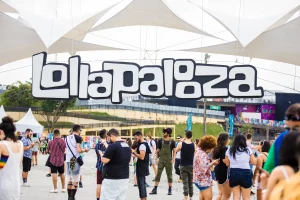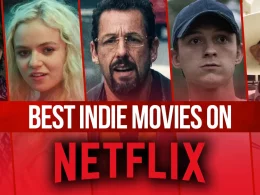Introduction
Festivals have always been a vibrant part of cultural and social life, but as the world evolves, so do the trends shaping these events. From technology to sustainability, the future of festivals holds exciting opportunities and challenges. Let’s explore the eight key trends transforming festivals in 2024 and beyond.
Role of Festivals

Festivals play an important role in society by bringing people together and celebrating culture, tradition, and creativity. They act as a platform for artists, performers, and creators to showcase their work. Festivals also help preserve cultural heritage and offer a space for people to experience new and different things.
Top 8 Trends For The Future of Festivals
1. Digital-First Experiences

As technology becomes integral to our lives, festivals are embracing digital solutions. From live-streamed events to augmented reality (AR) shows, attendees can enjoy immersive experiences from anywhere. Virtual reality (VR) stages and AI-generated music are also redefining entertainment.
Key Example: Coachella’s AR-enabled app transformed user interactions in 2024.
2. Sustainability at the Core

With climate change concerns growing, festivals are focusing on eco-friendly practices. From banning single-use plastics to promoting carbon offset programs, sustainability is now a festival must-have.
Key Example: Glastonbury introduced solar-powered stages and water refill stations.
3. Personalization and Micro-Events

People crave personalized experiences. Festivals now cater to niche audiences with smaller, themed events that feel intimate. Apps that suggest tailored activities based on interests enhance engagement.
Key Example: Culinary festivals are offering curated tastings for food enthusiasts.
4. Inclusive and Diverse Lineups

The future of festivals includes representation. From diverse performers to accessible facilities, inclusivity ensures everyone feels welcome.
Key Example: Essence Festival focuses on celebrating Black culture through music, art, and talks.
5. Health and Safety Innovations

Post-pandemic, health protocols remain a priority. Festivals are introducing touchless payments, advanced crowd management systems, and wellness zones.
Key Example: Festivals like Tomorrowland now offer meditation areas and rapid testing zones.
6. Local Impact and Community Involvement

Festivals are becoming more connected to their host communities by supporting local businesses and showcasing regional talents. This approach strengthens cultural exchange and economic benefits.
Key Example: The Jaipur Literature Festival collaborates with local artisans for exhibits.
7. Technology Integration with AI and Blockchain

AI and blockchain are transforming ticketing systems, reducing fraud, and improving logistics. AI-powered chatbots provide instant customer support for attendees.
Key Example: Burning Man uses blockchain for secure ticket resale and entry verification.
8. Experiential Marketing Collaborations

Brands now create immersive experiences at festivals to engage audiences meaningfully. This trend merges marketing with entertainment, enhancing brand recall.
Key Example: A major beverage brand hosted a “neon forest” at Lollapalooza.
Music Festivals Leading the Way
Music festivals remain some of the most popular events. They bring people together to enjoy live performances by famous and new artists. These festivals also give musicians a platform to reach new audiences.
From pop and rock to jazz and electronic music, there’s a festival for every music fan. As the music industry evolves, festivals continue to play a big role in shaping trends and introducing fresh talent.
The Importance of Festival Accessibility

Ensuring festivals are accessible to everyone is becoming a key priority. This includes making sure that people with disabilities can easily get to the event, enjoy the performances, and move around comfortably.
Accessibility also means providing services like sign language interpreters, wheelchair access, and sensory-friendly environments. As festivals become more inclusive, they offer a better experience for a wider range of people.
The Impact of Technology on Festivals

Technology is making festivals more exciting and interactive. Organizers are using things like virtual reality (VR) and augmented reality (AR) to enhance the experience.
VR allows festival goers to experience performances from anywhere, while AR can add extra layers of fun to performances with digital effects. Technology is also helping with festival planning and safety, by tracking crowds and making sure everything runs smoothly.
Increased Focus on Sustainability

Sustainability is becoming a big priority for festivals. Many events are now focusing on reducing waste, conserving energy, and using environmentally friendly products.
For example, some festivals no longer use plastic straws or bottles, and they encourage recycling and composting. This trend helps protect the environment while also attracting attendees who care about the planet.
The Rise of Family-Friendly Festivals

Family-friendly festivals are becoming more popular. These events are designed to be fun for people of all ages, with activities like kid-friendly games, performances, and food. They also offer a safe and welcoming environment for families to spend time together. As families look for ways to enjoy entertainment together, these types of festivals are gaining more attention and support.
Art and Creativity at Festivals

Art has become a central part of many festivals. From live painting to large art installations, creativity is everywhere. Festivals often feature interactive art pieces that attendees can explore or take part in. This focus on art makes festivals more colorful and exciting while supporting artists and their work.
Collaboration with Local Artists and Artisans
Festivals are increasingly collaborating with local artists and artisans to showcase regional talent. Instead of only featuring big-name performers, many events now offer a platform for local musicians, painters, sculptors, and craft makers. This gives artists the opportunity to display their work and connect with festival-goers. These partnerships help build a stronger connection to the community and support small businesses.
Pop-Up and Mobile Festivals
Pop-up festivals and mobile events are becoming more common. These temporary festivals often appear in unexpected places, such as parks, rooftops, or vacant lots. They are easy to set up, travel to different locations, and offer a unique experience each time.
This trend is especially popular in urban areas, where space is limited and people seek fresh experiences. Pop-up festivals also allow organizers to test out new ideas in different locations before committing to larger, long-term events.
The Influence of Global Trends

The Future of Festivals will be shaped by global trends, including cultural influences from different parts of the world. Festivals are increasingly incorporating elements from various cultures, music genres, and traditions.
This helps to bring together diverse audiences and create a more inclusive atmosphere. As globalization continues, expect more fusion events where international artists and local performers collaborate to bring unique experiences to the stage.
Challenges of Festivals
Despite their many benefits, festivals face several challenges. Organizing large events can be expensive and time-consuming. There are also concerns about environmental impact, safety, and managing large crowds. Weather, travel difficulties, and security threats are other issues that can affect the success of a festival.
Future of Festivals

The future of festivals looks bright, with many exciting changes ahead. Technology is expected to play a bigger role, offering more interactive and immersive experiences. Sustainability and inclusivity are also key trends that will shape the festivals of tomorrow. Organizers will continue to adapt to changing needs and create events that are safe, engaging, and environmentally responsible.
Conclusion
Festivals are changing in exciting ways, from using new technologies to focusing on sustainability and inclusivity. They bring people together to celebrate music, art, food, and culture, while also supporting local communities and economies. As festivals continue to grow and adapt, they will remain an important part of our lives, creating memories and connections that last a lifetime.












